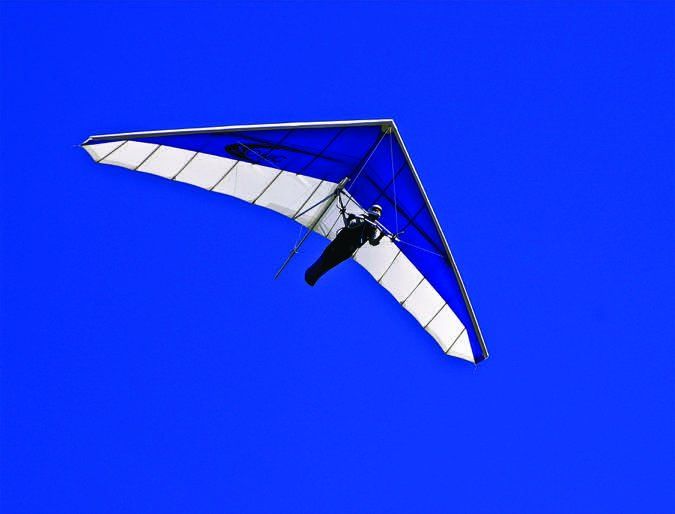The first years and hours I spent aloft weren’t really loggable toward an FAA pilot certificate. That’s because I was doing it from a hang glider, jumping off the side of a mountain, wearing a helmet and strapped to a wing. I was the landing gear. It was more of a sport than a form of transportation, but that early exposure to flight taught some lessons that were easily transferred to powered airplanes. I went on to earn my private and an instrument rating, and have flown some interesting airplanes along the way.
Yes, flying a single-engine piston is quite different from a hang glider. But it wasn’t until after adding ultralight aircraft to my experience did the value of learning to hang glide become apparent for its benefits to my flying and judgment skills. From preflight attention to weight-and-balance, to pitch control to manage airspeed, to using lift to stay aloft, the entirety of soaring in a hang glider or a sailplane depends on winds, lift, gravity and a tactile connection to the machine. Many of those mechanical and judgment skills carry over to powered aircraft. That transfer is not readily apparent for some skills; for others, it’s the epitome of obvious.
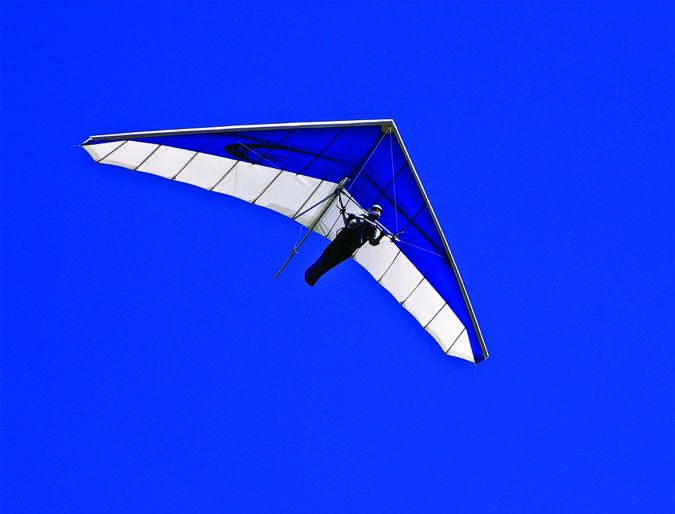
Playing Dead Stick For Real
The fundamental difference between hang gliders and sailplanes, and airplanes is the latter has at least one engine. That means every landing is an engine-out exercise when flying a hang glider, with no real opportunity for a go-around. In fact, few powered-aircraft pilots ever experience a true, total, no-power-at-all, dead-stick landing. Simulated engine-out approaches don’t count—and most instructors give back power well before the trainee has to commit to landing.
Similarly, most aviators never face deciding which field or forest poses the least threat to surviving a forced landing. In reality, only a few conventional pilots experience these events for their first time, wholly out of necessity of a flight gone wrong. For that matter, how many power pilots ever experience a dead-stick takeoff?
Hang glider pilots who start their training foot-launching off a hill, slope or mountain side face all these challenges from the start. As they advance their experience, they also pick up other skills not easily learned in powered flight. For example, learning to stretch a glide and learning when not to. Flying hang gliders and sailplanes means making every landing dead-stick, whether ending an exhilarating 15-second sled run off a training slope or coming at the end of an hours-long flight aiming for endurance and/or distance.
Not Engines…Airfoils
If only someone gave me a dollar for every time a non-flyer said to me, “I’d try hang gliding if I had an engine to get me out of trouble.” That line grows out of a misconception with its roots in that classic photograph of Orville Wright piloting the Flying Machine off its rail runway on December 17, 1903.
Engines are not what makes us fly. People had flown gliders for years before the Wrights. But their machine carried an engine aloft, allowing for sustained flight (and they understood they needed to change the wing’s shape for controllability). Wings—airfoils of various camber and chord—provide the lift. And you learn that from the start of soaring instruction.
While not practical transportation, soaring machines let pilots cover remarkable distances. An open-distance straight-line record of 529 miles in a sailplane is one standout cross-country example, and even hang gliders can go places in the right conditions. The record open-distance hang-gliding record stands at 475 miles.
Preflight Preparation
Most hang gliders fold up into a round package about 14 inches across and 16 feet long, or longer. Most sailplanes allow the wings to be removed for storage and transportation in a trailer. In that way, these simple aircraft present significant preflight inspection demands since both must be assembled before flight, something we don’t have to do with the average Cessna or Cirrus.
Modern sailplanes include linkages that almost automatically connect aileron pushrods to the control stick linkage. Assuring that the pins holding and aligning the wing spars, checking spoiler linkages and assuring connections for the rudder and elevators fit into the same mold as preflight inspection of powered aircraft.
Hang gliders also require the pilot to erect the control bar, that triangle assembly pilots use to maneuver by shifting their weight. Next, they spread the wings. Then they insert battens into pockets in the upper and lower surfaces of the wing sail. Next, the cross bar must be drawn back to the top of the triangle bar and secured to the keel. Some wings also sport a pulley mechanism to vary the wing geometry in flight, which must also be checked. With all these parts to check, soaring pilots become immersed in the importance of the preflight inspection.
Weight and Glide Ratio
Soaring pilots also learn to work their gross weight to give them the best prospects for the flying they plan on an given day. At higher wing loadings, sailplanes or hang gliders will fly faster than at lower weights/loadings. That consideration comes into effect on cross-country attempts.
Best glide ratio generally comes with a higher speed at the heavier weights. A higher best-glide speed is advantageous when racing from thermal to thermal, or when trying to cross obstacles when ridge soaring. Flying at higher weights generally means the minimum sink rate increases, be it sailplane or hang glider. The lower the minimum sink rate, the longer it takes the machine to come down and the easier it is to climb in weak lift.
Many sailplanes sport ballast tanks capable of holding a few hundred pounds of water, and some hang gliding harnesses feature ballast storage as well. If high speed is unnecessary or undesirable, the pilot can dump the ballast and regain a lower minimum sink rate, lower approach and landing speeds, but a lower best-glide speed.
Coordinating Turns
When soaring, you quickly learn the value of coordinated turns. Slipping or skidding turns can force a pilot exit a lift band or thermal, and increase sink rate. Since gyro instruments are not common to soaring machines—soaring being a day VFR activity—how does one judge whether to work left or right to coordinate a turn? With the simplest of all flight instruments: a yaw string. Tied to the noseplate or front lower wires of a hang glider—or taped to the base of a sailplane canopy, as shown in the image below—the simple yaw string accurately shows whether a turn is in a slip, a skid or is nicely coordinated. If the string blows straight at you in a turn, you’re making a coordinated turn. Simple.
If turning left and the string swings to the left, you’re in a skidding turn. Same turn with the string swinging to the right means you’re in a slip. Reverse the turn and, of course, the opposites apply: Right turn with right string, it’s a skid; right turn with left string, it’s a slip. Easy. Just “step on the yarn” to make the turn correctly.
Dead Stick Landings 1: Picking The Spot
Dierk Shaefer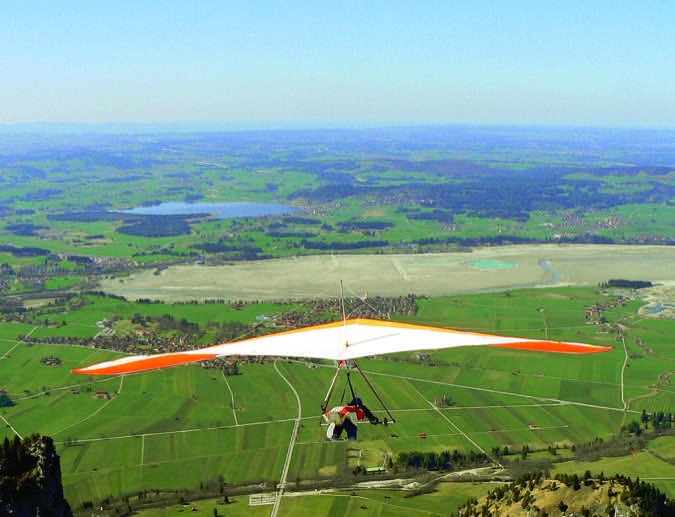
Soaring instruction typically includes learning tools to use when picking a landing area and a route to setting down on that spot. The best trick I ever learned involved how to quickly identify a piece of terrain as a possible landing field. Some powered-flight instructors teach this, but it’s not as prominent. The technique works like this:
– Flying trimmed and level at whatever altitude you have, look straight ahead at the landscape in front of you and scan from cowl to the horizon.
– Terrain you’ll overfly and clear appears to move toward and beneath the aircraft.
– Terrain you’ll never reach in a glide appears to move away from the aircraft.
– In between is one spot—an apparently stationary spot that only grows larger in your windscreen.
That’s approximately where you’ll touch down at your current speed, sink and glide rates. It is, of course, subject to change with conditions. This is a technique easily observed and practiced in powered aircraft, with the option of changing power to observe how the spot changes.
Dead Stick Landings 2: No, Not That One
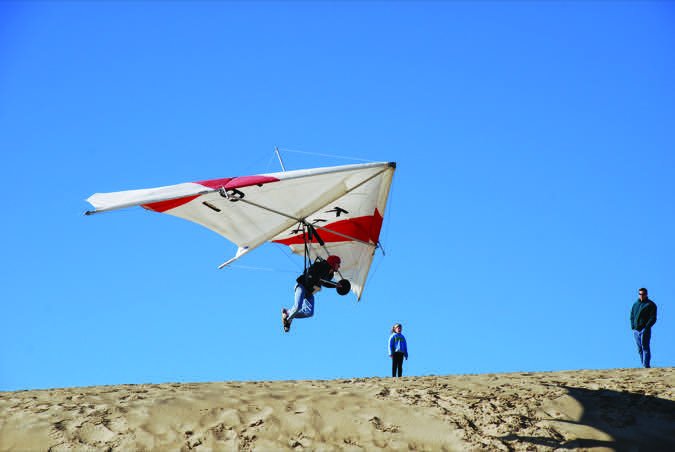
Following up on the sidebar on the previous page, the spot you’ll glide to is the spot stationary in your windshield, presuming nothing (wind, temperature, weight, etc.) changes . But you can count on the winds to change velocity as you descend. If there’s a lot of altitude involved, your true airspeed will decrease markedly in the descent. The bottom line is this: If you shoot for the stationary field, you run a high risk of coming up short, looking at a fence row, power line or other obstacle before you reach that stationary field.
So that stationary spot in the windshield is not where you want to set up for landing. The ideal landing area will be the next closest one, or one closer and to the left or right of your glide path.
You may have been gliding upwind, downwind or crosswind. But before you roll out on final, you’ll want to be pointed into the wind to minimize groundspeed when you finally touch down.
Finally, picking a field even closer than the one before the stationary field gives you the option of circling overhead to check conditions—tall grass, plowed earth, rocks or other hazards are all incentives to look elsewhere. And you can only exercise that option while you still have altitude to burn.
Pitch control
Sloppy pitch control can ruin a hang glider or sailplane pilot’s odds of a successful soaring flight. Precise pitch control comes into play for successful mountain launches, particularly running launches. Letting the nose rise during a takeoff run has caused more than a few pilots to risk dropping into the trees or terrain below the launch point. Meanwhile, letting the nose drop assures a diving launch, wasting altitude. And mismanaging pitch in turns is a sure way to lose altitude unnecessarily, hurting efforts to carve a coordinated turn.
Further, precise, proper pitch control is needed for both aero-tow and winch launches. A too-high angle of attack risks breaking the shear link protecting the wing from over stress; a too-low angle of attack rewards the pilot with substandard climb performance.
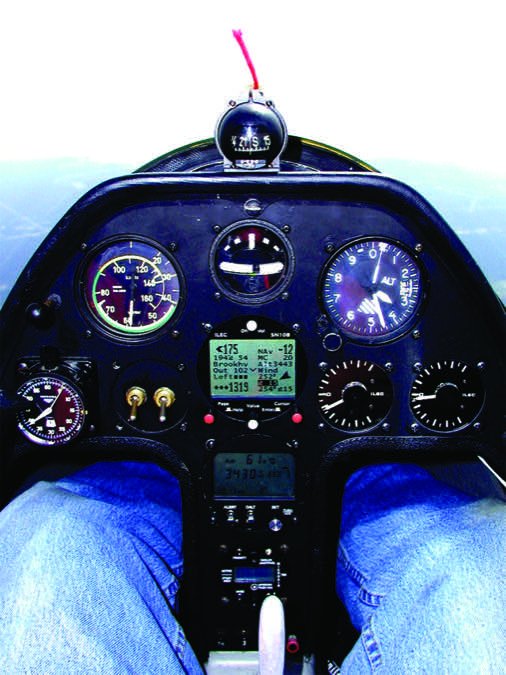
Cross-Countries
Flying powered aircraft cross-country, most pilots take note of stretches where an engine failure would be a significant challenge to survive: mountains, broad stretches of forest and vast urban areas. Taking note, however, doesn’t translate to most pilots totally avoiding those challenging stretches. They weigh the low odds of a failure forcing a landing…and generally fly on. The engine does, after all, give these pilots an option to divert, at least while it’s still running.
Soaring pilots, however, tend to plan to totally avoid cities and large bodies of water; mountains may be the source of lift or a launch site so soaring amid mountains is common. These options can be turned into skills with practice.
Paying attention to your loading and weight distribution to maximize glide, minimize sink and optimize your speed can pay dividends in the form of lower fuel consumption on long flights, even lower times from higher airspeed with the aircraft trimmed for maximum glide.
Learning to spot the intended touchdown spot (see sidebars on page 13 and 14) helps me adjust power and pitch to arrive at the threshold marks at 50 feet and slowing toward a full-stall landing.
And learning to routinely scan terrain for convenient landing options—and tacking to keep them within gliding distance—can ease some of the inevitable pressure accompanying an engine-out situation. Better still, a few hours of dual—or adding a sailplane rating to a private pilot certificate—can help a pilot hone all these skills for regular use in their powered flying.
Did flying hang gliders teach me everything I needed to know about flying airplanes? Not even close. But it did teach me a lot about the basics of flight, including controllability and how the flight environment can force a pilot to react. Basically, a hang glider wing flies just like an airplane wing.
Dave Higdon is a professional aviation writer/photographer with several thousand hours of flight time in hang gliders and airplanes.

